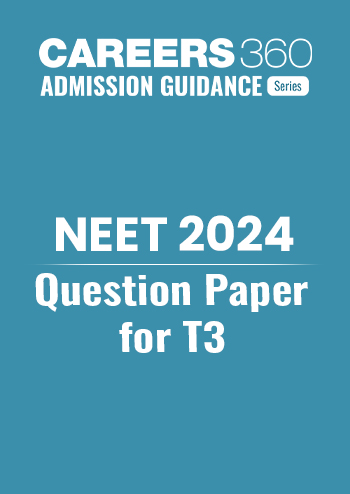Apply to Amrita Vishwa Vidyapeetham Allied & Life Science 2024
Mendelian Genetics - Practice Questions & MCQ
Edited By admin | Updated on Sep 18, 2023 18:34 AM | #NEET
Quick Facts
-
Gregor Johann Mendel- Father of Genetics is considered one the most difficult concept.
-
29 Questions around this concept.
Solve by difficulty
Alleles are:
Which one from those given below is the period for Mendel's hybridization experiments?
Among the following characters, which one was not considered by Mendel in his experiments on pea?
How many pairs of contrasting characters in pea plants were studied by Mendel in his experiments ?
In his classic experiments on pea plants, Mendel did not use :
What was Gregor Mendel's main contribution to science?
Concepts Covered - 2
Gregor Johann Mendel- Father of Genetics
- Mendel was born in 1822 in today’s Czech Republic.
- In 1856, he began a decade-long research pursuit involving inheritance patterns in honeybees and plants, ultimately settling on pea plants as his primary model system.
- In 1865, Mendel presented the results of his experiments with nearly 30,000 pea plants to the local Natural History Society.
- In 1866, he published his work, Experiments in Plant Hybridization, in the proceedings of the Natural History Society of Brünn.
- He used garden pea (Pisum sativum) as experimental material because of its following features:
- Well-defined contrasting characters
- Bisexual flowers
- Naturally self-fertilizes, resulting in highly inbred, or “true-breeding,” pea plants
- Annual
- Large quantities of garden peas could be cultivated simultaneously.
- Mendel conducted such artificial pollination/cross-pollination experiments using several true-breeding pea lines.
- A true- breeding line is one that, having undergone continuous self-pollination, shows the stable trait inheritance and expression for several generations.
- Mendel selected 14 true-breeding pea plant varieties, as pairs which were similar except for one character with contrasting traits.
- Some of the contrasting traits selected were smooth or wrinkled seeds, yellow or green seeds, smooth or inflated pods, green or yellow pods and tall or dwarf plants
- The seven contrasting pairs of garden pea selected by Mendel were:
- Mendel succeeded in deducing the inheritance patterns of different characters as he focused on one character at a time.
- Mendel provided statistical analysis of the results which added to the credibility of data collection.
- For several reasons, Mendel’s work remained unrecognised until 1900 because of the following reasons:
- Firstly, communication was not easy (as it is now) in those days and his work could not be widely publicised.
- Secondly, the scientific community believed incorrectly, that the process of inheritance involved a blending of parental traits that produced an intermediate physical appearance in offspring; this hypothetical process appeared to be correct because of what we know now as a continuous variation.
- Thirdly, Mendel’s approach of using mathematics to explain biological phenomena was totally new and unacceptable to many of the biologists of his time.
- Finally, though Mendel’s work suggested that factors (genes) were discrete units, he could not provide any physical proof for the existence of factors or say what they were made of.
- In 1900, three Scientists - de Vries (of Holland), Correns (of Germany) and von Tschermak (of Austria) independently rediscovered Mendel’s results on the inheritance of characters.

Terminology of Genetics
- Gene:
- The term was given by Johansson.
- Genes are the smallest unit of heredity.
- Genes are those segments of DNA that carry specific information.
- Genes are made up of polynucleotides.
- The location of a gene on a chromosome is called locus.
- There can be many loci on one chromosome.
- Genotype:
- It refers to the genetic make-up of an organism.
- Phenotype:
- It refers to the physical appearance of an organism.
- Alleles or Allelomorph:
- The term was given by Bateson.
- Alleles are the alternate forms of a gene.
- They specify a pair of contrasting character.
- Dominant alleles are those that express themselves in the presence of recessive allele. These are represented by capital letters.
- Recessive alleles are masked when dominant alleles are present. These are represented by small letters.
- They have the capability to be replicated, expressed, or mutated.
- Homozygous:
- When both the alleles for a character are the same, the organism is said to have homozygous genotype.
- An organism can have homozygous dominant genotype when both the alleles of a gene are dominant.
- An organism can have homozygous recessive genotype when both the alleles of a gene are recessive.
- Heterozygous:
- When an organism has a dominant and a recessive allele for a particular gene, it is said to have heterozygous genotype.
- The phenotype of a heterozygous individual is similar to a homozygous dominant individual because of the expression of the dominant allele.
- Hemizygous:
- It is the condition when there is only a single allele present.
- Gametes are said to be hemizygous because they have only a single chromosome, with only a single allele for respective genes.
- Similarly, males are said to be hemizygous for the alleles present on X-chromosome because there is only a single X-chromosome present in males.
- Punnett Square:
- It was developed by R.C. Punnett.
- It is a graphical representation to calculate the probability of all possible genotypes of offspring in a genetic cross.
- Hybrid:
- A progeny resulting from a cross between two parents differing at least in a single character.
Study it with Videos
"Stay in the loop. Receive exam news, study resources, and expert advice!"

Books
Reference Books
Clear your Basics with NCERT
E-books & Sample Papers
Get Answer to all your questions
NEET Articles
May 17, 2024
Back to top




















